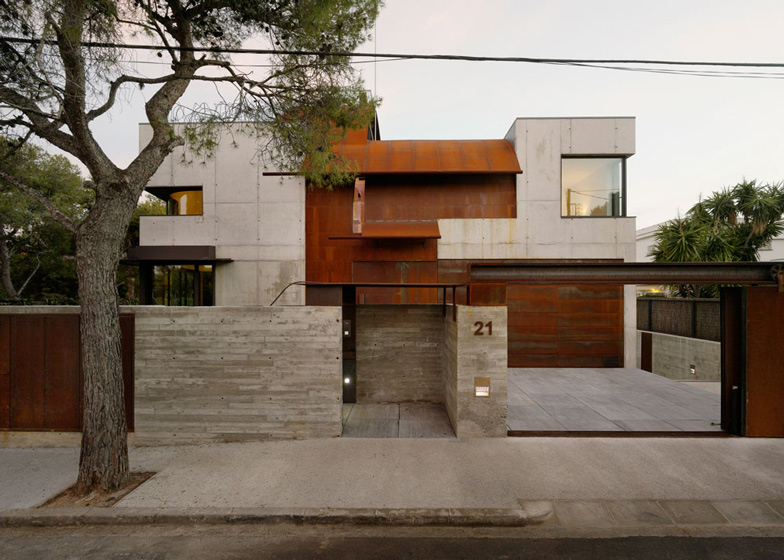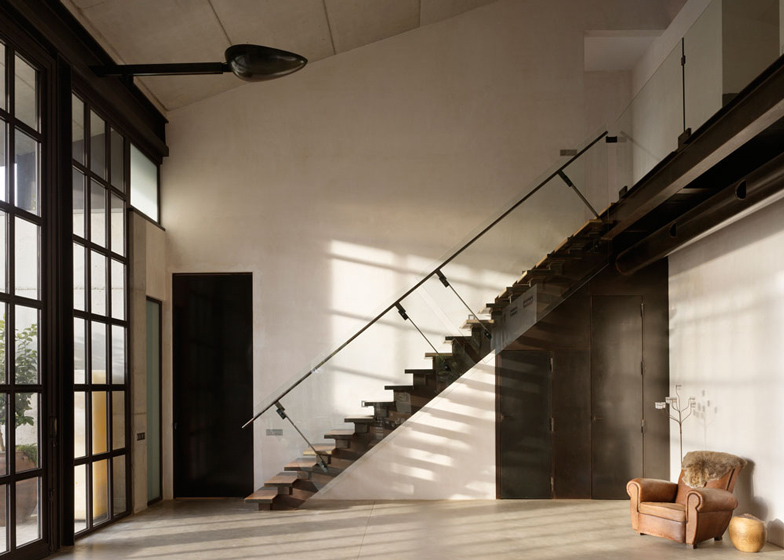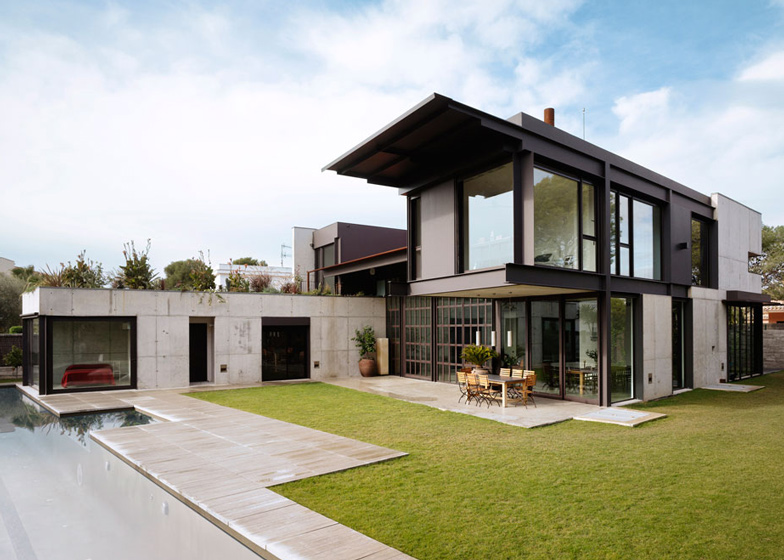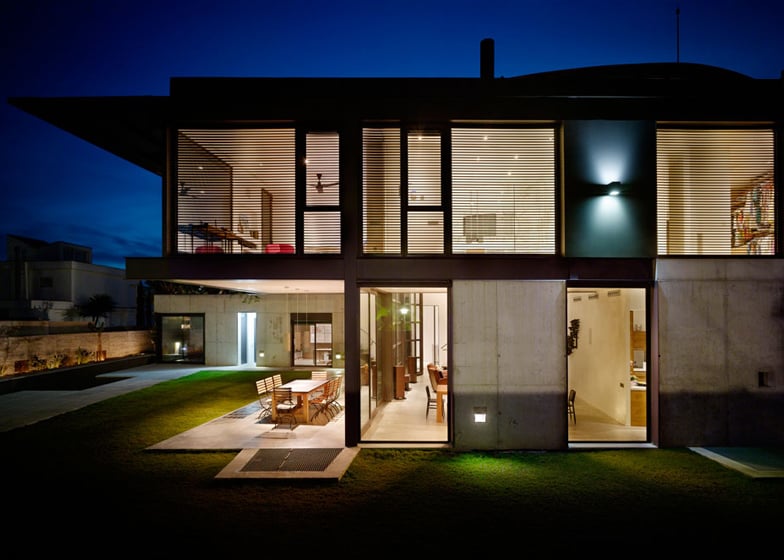One pivoting door sits within another to create a rusted steel entrance that can be big or small at this combined house and photography studio in Spain by American firm Olson Kundig Architects (+ slideshow).
Tom Kundig of Seattle-based Olson Kundig Architects designed Studio Sitges as the home and workplace of a photographer and his family in the coastal town of Sitges, north-eastern Spain.
Eschewing the stuccoed walls and tiled rooftops of the local Tuscan houses, Kundig opted for an industrial material palette that includes pre-weathered Corten steel and raw concrete, some of which was cast against timber formwork to create grainy textures.
The pivoting entrances form part of a large section of Corten steel, which curves around the top of the facade to reveal a row of clerestory windows that are sheltered beneath overhanging eaves.
Other features include a glass lift that ascends between all of the floors and a rooftop study offering views out over the Mediterranean Sea.
The building contains two double-height photography studios, both set below ground level. A ramped entrance allows cars and other large pieces of equipment to be driven straight into the spaces, while a mezzanine balcony with a glass floor offers views into the studios from the level above.
A glass lift ascends to living spaces on the two storeys above. On the ground floor, living and dining spaces can be opened out to the garden using more pivoting doors - this time made on glass - and furniture includes restored teak tables and leather seating.
A master bedroom is housed within a cantilevered block that extends out over a patio in the garden. A bridge connects it with three smaller bedrooms that open out to a terrace on the roof.
Photography is by Nikolas Koenig.
Here's a project description from the architects:
Studio Sitges
Studio Sitges is a live/work space for a photographer and his family. Located three blocks from the Mediterranean Sea, the building captures the casual energy of this cosmopolitan beach town thirty minutes from Barcelona.
The house is zoned vertically, with two large below-grade photography studios anchoring the building, a main floor for entertaining both large and small groups, and private areas above. A glass elevator moves between floors and culminates in an intimate rooftop atelier. Kundig describes the whole house as a studio - a space in which things can happen.
A custom-designed wall and gate of rough concrete and weathered steel pushes the boundaries of the design out to the street. The gate rolls away to reveal a garage and a steeply sloping driveway leading down to the studios. Large panels of Corten steel arch from the ground over the facade to form part of the roof; the entrance to the house is via a tall steel pivot door, inset with a pilot door.
The underground, double-height photography studios are strikingly raw. In both, cycloramas enable the illusion that the studio floor stretches into infinity. Cars and large pieces of equipment can drive directly into the space. Support areas include a glass-floored viewing area on a mezzanine overlooking the studios, as well as separate dressing, makeup, and spa areas. The studios are wired so that in-progress shoots can be viewed around the world.
The design of the ground floor takes advantage of the mild climate, using sliding and pivot doors to maximise indoor/outdoor living. On the second floor, an interior bridge spans the space and connects the master suite with the other bedrooms. The master suite cantilevers over a dining terrace, while a guest suite opens onto a roof deck and planted roof overlooking the lap pool.
Throughout the house, low-maintenance materials such as Corten, concrete (board formed and cast in place), and mild steel give the home a handcrafted feel. At the top of the house, an atelier with indoor and outdoor space offers the home's only view of the sea. At night, the atelier combines with the glass-topped elevator to appear like a beacon when lit.





